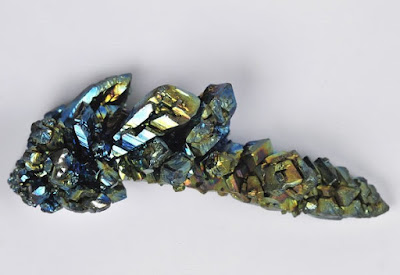Vanadium was discovered by Andres Manuel del Rio and Nils Gabriel Sefstrom in 1801.
The chemical symbol for Vanadium is V and its atomic number is 23.
We find it listed in the periodic table in Group 5 and 4 period and block.
Vanadium belongs to the family or chemical series of transition metals such as for example the Silver, the Bohrium, cadmium, ...
This element is stable.
Vanadium came from the Scandinavian word Vanadis.
Atomic number (Z) 23
Group, block group 5, d-block
Period: period 4
Element category: transition metal
Standard atomic weight (±) (Ar) 50.9415(1)[1]
Electron configuration: [Ar] 3d3 4s2
per shell: 2, 8, 11, 2
Physical properties
Phase solid
Melting point 2183 K (1910 °C, 3470 °F)
Boiling point 3680 K (3407 °C, 6165 °F)
Density near r.t. 6.0 g/cm3
when liquid, at m.p. 5.5 g/cm3
Heat of fusion 21.5 kJ/mol
Heat of vaporization 444 kJ/mol
Molar heat capacity 24.89 J/(mol·K)
Atomic properties
Oxidation states: 5, 4, 3, 2, 1, −1, −3 (an amphoteric oxide)
Electronegativity: Pauling scale: 1.63
Ionization energies 1st: 650.9 kJ/mol
2nd: 1414 kJ/mol
3rd: 2830 kJ/mol
Atomic radius empirical: 134 pm
Covalent radius: 153±8 pm
Crystal structure: body-centered cubic
Speed of sound thin rod 4560 m/s (at 20 °C)
Thermal expansion: 8.4 µm/(m·K) (at 25 °C)
Thermal conductivity: 30.7 W/(m·K)
Electrical resistivity: 197 nΩ·m (at 20 °C)
Magnetic ordering paramagnetic
Young's modulus: 128 GPa
Shear modulus : 47 GPa
Bulk modulus: 160 GPa
Poisson ratio: 0.37
Mohs hardness: 6.7
Vickers hardness: 628–640 MPa
Brinell hardness: 600–742 MPa
CAS Number: 7440-62-2
